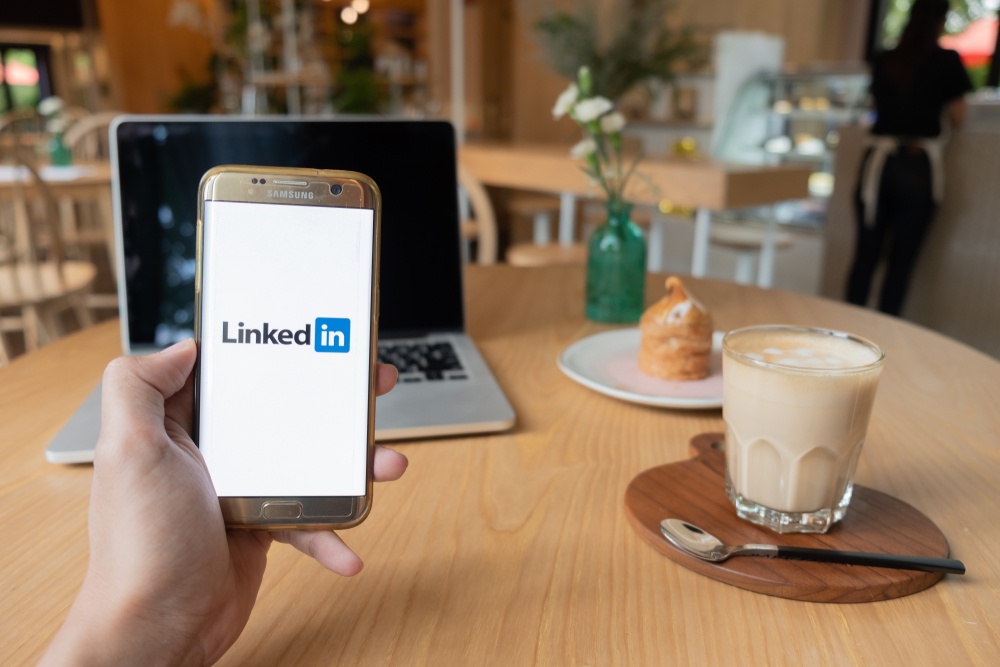When searching for new opportunities, making the right connections – and a great first impression – is among the toughest initial challenges. When reaching out to recruiters over LinkedIn and breaking the ice, it’s important to be justified and rational, as you don’t want to waste their time. That said, you should also avoid wasting your time; for instance, is this recruiter the right person to connect with? Do they hire for roles related to your skillset and capabilities, or do they assist clients in entirely different fields? Moreover, do you know what you’re looking for in terms of your desired career path?
To help you make a great first impression and get to know recruiters through LinkedIn InMail messages, here are some tips – and templates – that could prove handy. It’s time to form strong, long-lasting connections. If you’re wondering how to message a recruiter on LinkedIn, that starts with not relying on generic placeholder connection requests!
What is LinkedIn InMail?
LinkedIn’s InMail feature is a messaging system available only for LinkedIn Premium members. It works similarly to other social media messaging applications, though there are restrictions locked behind paywalls. For example, if you use the free version of LinkedIn, you can only access basic messaging.
This distinction is important, as it’s only with the Premium tier that you can direct-message individuals on LinkedIn who aren’t on your list of connections, recruiters included. With basic messaging, you can only send messages to those on your connection list, so unless you already have a recruiter as one of them, you can’t contact them through LinkedIn.
How to Reach Out to a Recruiter
Before we dive into the message templates further below, let’s first explore the characteristics your outreach efforts should demonstrate. These include the following:
Approachable and Positive
Coming across as friendly, appreciative without overdoing it, and overall approachable makes it easier for the recruiter to determine whether your personality matches specific roles. Maintaining positivity, even if you’re enduring a long and arduous search for work, is also important – the last thing you want to make is a poor first impression by being standoffish, overconfident, or unwilling to accept suggestions!
Considerate, Patient, and Human
The “human” part of this is essential, as anyone can paste a bland and generic message. In fact, sending a connection request on LinkedIn automatically comes with one of these (unless you replace it with your own writing, which we highly recommend). You should also bear in mind that the recruiter is human; they can only get so much done in a day, work hard to support clients and candidates, and may not get back to your messages immediately. Here is where being patient and considerate plays a significant role in securing a pathway to your dream position.
Professional, Error-Free, and Accurate
You should always ensure that your messages are written at a high-quality standard. They should use grammar correctly, be free of typos or incomplete sentences, and be properly punctuated. Taking the time to do this demonstrates a commitment to quality assurance, professionalism, and accountability. You should also avoid overwhelming the recruiter with information, which may be redundant to them, so be sure to analyze the message from their perspective. What are they looking for?
Six Examples of Messages You Can Send
Next up, depending on the situational context, here are six different types of messages you can send over LinkedIn’s InMail feature:
Requesting a Connection (with a Short, Personalized Message)
A connection request should always be personalized without rambling on or being too wordy. Less is more, and there will be plenty more time for deeper conversation if your request is accepted! Keep it short, sweet (without being sugary), and to the point, as this demonstrates respect for the recruiter’s precious time.
Here’s a sample of a connection request that you could work with (feel free to tweak as preferred to make it your own or shorten it further):
Hello [recruiter’s first name],
My name is [x], and I’m a [position title]. I happened upon the posting for the role of [desired role] and believe my [specific skills, experience, and/or qualifications] are an ideal match for the position. Feel free to connect with me if you’d like to get to know one another, or to discuss this or other available opportunities. Thanks for your time, and enjoy the rest of your day!
Sincerely,
[your first and last name]
Sending a Follow-Up (After/if the Connection Request is Accepted)
If the connection request is accepted, pat yourself on the back, as first impressions are anything but easy! The next step is to send a follow-up upon the request being accepted. This can generally be even shorter than the connection request message; you want to give them breathing room and space to make the next move on their own terms, after all! In addition, you may also wish to attach your resume for their convenience (be sure to mention this in the message if you do so).
Below is one such example of how you could word your follow-up message:
Hello [recruiter’s first name],
Thanks for accepting my connection request! Looking forward to getting to know each other and perhaps discussing potential opportunities that align with my [relevant skills and/or background], as detailed in my attached resume. Feel free to reach out anytime.
Sincerely,
[your first and last name]
Asking for Open Jobs
Next, what if you happened upon an open position after adding a recruiter as a connection? Again, the “trick” is to be relevant and informative without overwhelming the reader or demanding too much of them. Here’s an example that you could go with (once more, be certain to reword this so that it matches your personality):
Hello [recruiter’s first name],
I hope you’re having a great week! I noticed that [x position] has been made available and believe that my background as [background/career/skills details] would be a great fit for the role. If you’re interested in discussing this opportunity further, feel free to reach out. Take care in the meantime,
Kind regards,
[Your first name]
Asking if You’re Eligible for a Position
Similar rules as the above example apply here, though this is definitely a chance to demonstrate further how much homework you’ve done on the role and company in question. Try out the example below:
Hello [recruiter’s first name],
How are you? I’ve learned that [x role] has been made available, and I would love to discuss the opportunity with you. I’m confident that my skills in [x/y/z skills] and my background in [background] can be applied to this position. Would you be free to discuss this opportunity and my eligibility for the role in question? Thanks for your time, and take care.
Kind regards,
[your first name]
Following Up After No Response
What happens if the recruiter isn’t getting back to you? If this occurs, don’t take it personally; they’re likely swamped with their own work or simply inundated with other messages. Again, patience is key, so be sure to apply that tactfully to your check-in message, such as in the example below:
Hello [recruiter’s first name],
How have you been? Just following up on the message I sent on [date]. If the position in question is still open, I would be happy to discuss it and my background with you, and I remain interested in the opportunity to do so. Feel free to reach out whenever it’s convenient, and thanks for your time.
Kind regards,
[Your first and last name]
Expanding Your Network
Are you reaching out to expand your network and procure new connection-driven employment opportunities? This is a popular practice and can foster deep and meaningful professional relationships if handled with care and consideration. Try the example message below, for instance:
Hello [recruiter’s name],
My name is [your first name], and I’m a [role] with a background in [background]. I [read your article on x/am interested in your perspective on y/ etc.] and would love to connect with like-minded individuals such as yourself within the [industry] sphere. Feel free to reach out anytime if you’d like to get to know each other and/or chat, and enjoy the rest of your day!
Kind regards,
[your first and last name]
What NOT to Do
Lastly, here’s a quick-fire run-through of how you don’t want to come across to a recruiter or other prospective connection in your messaging over InMail:
- Self-absorbed, pretentious, impersonal, or arrogant
- Condescending or negative/giving off bad vibes
- Demanding, rude, and/or impatient
- Requesting personal or sensitive information
- Unwilling to let the messaged individual respond when it’s convenient for them
- Pushy or aggressive (InMail users like these come across as salespeople or only in it for themselves rather than those seeking meaningful prospective relationships)
- Not willing to open up and provide insights into your background/capabilities (making you less marketable)
- Inaccurate or not knowledgeable of the recipient or their organization’s offerings/roles
Closing Summary
All in all, messaging a recruiter is similar to making the first move in any other kind of relationship. You need to be tactful, considerate of both sides of the proverbial table, patient, and easy to interact with. Avoid overwhelming recruiters with walls of text, constant messages, or any negative personality traits. You should also take the time to research them and the organization(s) they represent, demonstrating genuine interest in the opportunities they may have available. And, above all else, don’t be afraid to go slow and gradually build the relationship so that there is mutual trust and consideration. For assistance with improving your messaging and approach, feel free to reach out to us at True North HR today. We’re happy to help!



